Trims
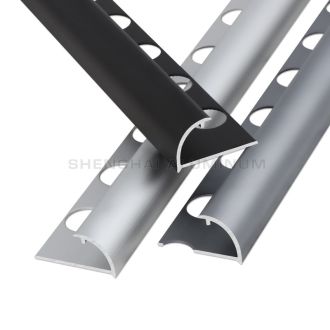
Trim Strip
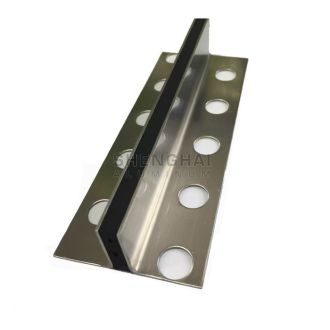
Expansion Joint
_67.jpg)
Square Trim
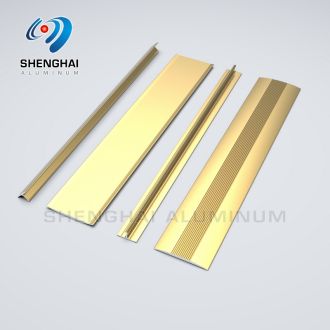
Carpet Cover Strip
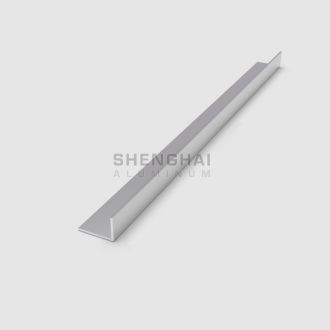
90 Degree Angle Trim
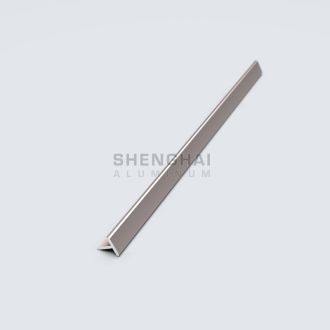
Floor Transition Strip
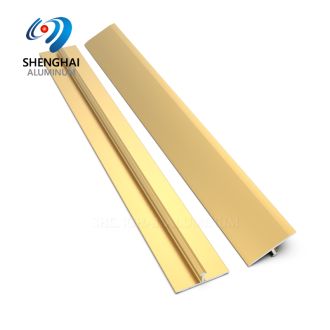
T Shaped
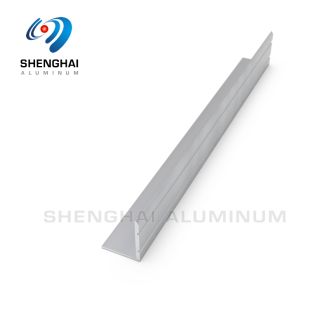
Straight Edge
Leave a Message
What is Aluminium Trim For Tiles
Aluminum extrusion is a multi-versatile sheet metal fabrication process used to transform aluminum into pieces with desired lengths, widths, heights and shapes. One of the many uses of this process is the creation of trims i.e. long, narrow and flexible finishing for furniture, tiles, sharp edges etc.
Thanks to the extrusion process, it’s indeed possible to transform malleable aluminum billets into trims of different shapes for whatever architectural application you have in mind. Of course, aluminum is a darling within architectural and engineering circles thanks to its malleability, recyclability, high-strength-to-weight-ratio and rust and corrosion resistance.
If you are looking for aluminum trim pieces to make your finishing and decorative work standout, consider products from Shenghai Aluminum. We offer various types of aluminum trims at competitive prices.
What is the process of creating aluminium trim for tile?
As mentioned, aluminum trims are created via the extrusion process which is a concept most people are familiar with. But if you haven’t a clue, just picture the way you push a toothpaste out of its tube when you go to brush your teeth. That’s basically how extrusion works -forcing a malleable substance through a tube opening such that it emerges with a profile similar to the opening’s cross-section.
In aluminum extrusion, a die with a specific cross-sectional opening is used to transform malleable billets or logs into pieces with solid, hollow or semi-hollow shapes. Solid shapes are pieces without any opening while semi-hollow and hollow shapes feature partial or full openings with narrow or wide gaps. Trims typically feature hollow or semi-hollow shapes.
Additionally, it’s possible to customize billets into a sophisticated structure with interlocking pieces and multiple color patterns.
The process of shaping malleable aluminum billets or logs is known as hot extrusion. It’s what most fabricators do. But there are some that do cold extrusion. However, this is a look at the hot extrusion process.
Hot aluminum extrusion
This process starts with the preparation of an aluminum billet or log. This simply involves chopping an ingot into an appropriate size for extrusion. Different aluminum alloys are selected for their physical and chemical characteristics. However, 6063, 6160 and 7075 are like the most popular alloys in extrusion.
Once the billet is ready, the operator selects and prepares the die assembly. Some extrusion presses feature premade die assemblies for aluminum trims. These comprise the die, die cap, die ring, bolster, sub-bolster and backer. In case these are missing, one can create a die from aluminum or steel. In any case, the die must be preheated to about 500 Celsius before loading onto the press.
At the same time, the aluminum billet is placed in an oven and heated to make it just soft enough for extrusion but not too hot that it flows like a soup. Depending on the alloy, you just need to heat it to between 375- 500 Celsius, never above 600 Celsius or bang goes any fond hopes of a successful extrusion.
Once the operator takes the billet from the furnace, they load it onto the cradle and remove any excess material using a pair of log shears before forcing it into the extrusion barrel using the extrusion ram. The press can be hydraulic, pneumatic or electric.
Hydraulic presses feature pumps, cylinders, oil, valves and other components but tend to be quite noisy and prone to oil leaks. Pneumatic presses work just like hydraulic presses but use pressurized gas instead of oil.
On the other hand, electric presses use turning screws eliminating the need for oils and associated problems. They are typically computer controlled leading to more fast-paced and precise extrusions and without too much noise.
Anyway, when the operator pushes the ram, it generates hundreds of thousands of pounds of force pushing the billet into the extrusion barrel and through the mold opening. This process is known as forward extrusion. It’s a simple process but it generates a lot of friction and heat. The alternative is to force the die assembly against the billet, in what’s known as indirect extrusion. It’s complex but doesn’t generate a lot of friction and heat that otherwise creates temperature control issues.
Temperature and pressure control
Temperature and pressure control is crucial during aluminum extrusion. Apart from preheating the die and the billet, the operator also preheats the extrusion barrel. This helps keep the barrel hot so it doesn’t draw heat and cool the billet before extrusion. But it’s also important to avoid heating the barrel too much lest it heat it up and soften the billet into a soup.
Most extruders feature infrared cameras to help monitor temperature at the pre-loading, extrusion press and lead-out table. These are the three important temperature control points for a successful and efficient extrusion.
When it comes to pressure control, the operator just takes care not to push the billet too slow or too fast. Pushing the billet too slow may result in cooling before extrusion, while pushing it too fast can damage the die.
Runout table
The aluminum comes out with a long and narrow profile just like the toothpaste emerges from a tube. The shape will be similar to that of the die opening. There’s a runout table with a puller that grabs the piece and slides it down the table for cooling. Depending on the setup, one may use a water bath or a series of fans.
Once the extrusion reaches a desired length, the operator shears it off and transfers it to the lead-out table for further cooling and stretching. Of course, stretching helps remove any unwanted kinks and stress the piece accumulated from the high-temperature and pressure extrusion process. Cooling and stretching results in pieces with desirable shape and hardness.
Cutting and tempering
Following cooling and stretching, the operator resizes the pieces into desirable lengths as ordered by the customer and then sets them into an oven for tempering to improve metal properties. Tempering is only used for alloy 6061.
Other secondary services include deburring to remove piercing and rough spots from the surface, making it smooth for powder coating, e-coating or other surface treatment techniques. Depending on the mold’s profile and the post-extrusion surface finishing, the trims may be useful in various applications.
Types of Aluminium Tile trims
Aluminum tile trims from the extrusion can be named according to the letters they are shaped after as follows:
J-shaped trim
This trim combines 3 sections into a J-shaped structure for use on the edges of doors and windows to protect people from rough edges and also prevent unnecessary wear and tear during opening and closing. J trims may also be used on the edges of shelves, countertops and tiles for a professional look.
U-shaped trim
Unlike the J trim, a U trim combines a flat section and two equal-sized vertical sections into a U-shaped piece for use on the edges of surfaces such as countertops, doors, windows, tables, solar panels, and more to keep them clean and protected from impact.
U trims can be added to wooden and glass panels as well as structures made of wire mesh. They boost the look of the structure without tuning up fabrication costs since they don’t need to cover the entire surface of the structures.
L-shaped trim
L trims are also known as aluminum angles. Basically, these combine a wall and flat section into a 90-degree structure for use as braces, frames or finishing for countertops and shelves for a clean and protective cover from chipping and unnecessary wear and tear.
Different angles vary in wall thickness and leg lengths. Typically, you can find angles with wall thickness between 0.36-0/64 centimeters or with legs of varying or equal length.
H-shaped channels
H channels are shaped just like the letter itself for use as frames for doors and windows and as trims for railings. H channels can also be paired with paneling systems such as wood, glass, or PVC panels to connect corners and create boundaries.
T-shaped trims
These trims combine a standing and flat piece into T-shaped profiles known for their incredible strength and durability. They can be used on the edges of tiles to protect from impact, and as transition trims to connect two surfaces, provided they are of equal height.
When used to connect different surfaces, T trims result in a polished and seamless transition between two surfaces.
Z-shaped trims
These trims are shaped like the letter z and are used in various roofing applications as receivers for headwall flashing for ridge caps. They help achieve a professional look while keeping rain water from eroding parts of the wall and seeping into the building.
F-shaped trims
F trims are like angle channels but with an extra section, resulting in an extra groove. F trims are used as finishings on the edges of tiles, walls, and countertops to create a polished look and also protect against impact and wear and tear. They may also be used as transition trims to connect surfaces of different materials, resulting in a smooth and seamless look.
Y-shaped trim
This trim is extruded in the form of the letter Y for use in covering the sharp edges of surfaces and as a transition element allowing engineers to install channels on roof and floor surfaces. The Y trim is designed for ease of use. It can be installed quickly, cutting down construction time and also making it useful in DIY projects.
Hat Channels
Hat channels are shaped like letter U but with extra flaps on the side sections resulting in pieces that can be used as siding for curtain walls and other exterior wall structures as well as air gap solutions between exterior and interior walls. They set the foundation for creating water diverting channels on walls as well as air-gapping structures to boost thermal efficiency and cost-efficient heating and cooling.
Rounded trims
These aluminum trims look like C-channels but with thicker walls such that they look like rods with channels in them. A rounded trim can be added on the edges of countertops or any other structure with a curved edge for a professional look and protection from impact. They are also typically used as casing for LED lighting fixtures.
What are the applications of aluminium edge trims?
As explained above, aluminium edge trims have various applications in architectural and engineering projects, including:
Covering for rough edges
Aluminium tile trims are used to put finishing touches on projects without forking too much money on the fabrications. They can be used on countertops, windows, doors, tiles and more to hide ugly edges, protect them from impact and wear and tear and also achieve a clean and professional look.
Transition structures
Some aluminium trim, particularly T-shaped profiles, can be used as transition pieces to connect two different surfaces, provided they are of similar heights. For example, they can be used to connect floor tiles, ensuring a smooth and seamless transition between surfaces.
Corner guards
Aluminum trims can also be used as guards on the corners of walls, tables, benches, bricks, wallpapers and other surfaces that experience frequent use to protect from abuse and wear and tear.
Corner frames
Aluminum trims can also be combined with wood, glass, cardboard or PVC panels to create stable sides for structures such as shelves and crates for storing items for safekeeping or transportation.
Basis for water diversion and thermal control
Aluminum trims such as the Z-shaped trims and hat channels help achieve water diversion and thermal control goals. The way Z trims are shaped offers directionality on roofs and headwalls, preventing water from leaking into structures. Meanwhile, hat-shaped channels help seal gaps between exterior and interior walls, keeping air from leaking in and out of the house with heat.
To summarize, aluminum trims are created via the industrial extrusion process for use in architectural and engineering projects as finishings for use on the edges of various structures to hide roughness, protect from impact and create a polished look. They can also serve as corner or transition elements in various construction projects.
If you are looking for elegant and sturdy aluminum trims for your architectural application, we’d like to introduce you to our trims. We produce many different types of trims with clean lines and trendy finishes for use in various projects. Visit our products page for more details.
